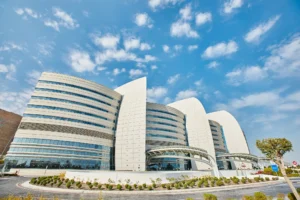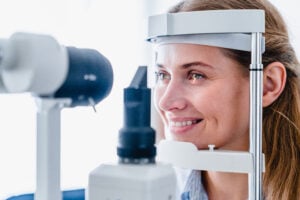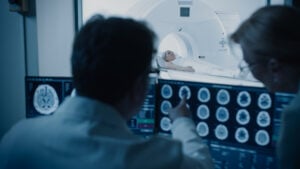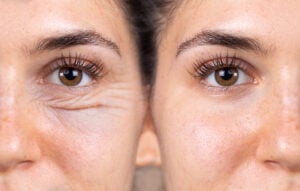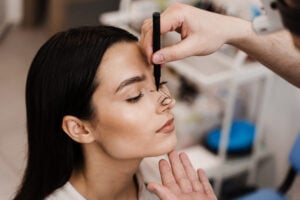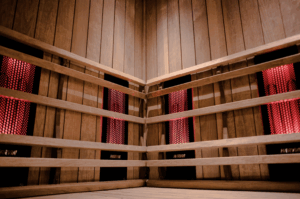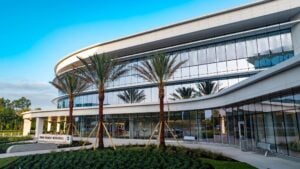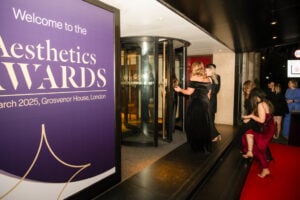Tennis elbow, medically referred to as lateral epicondylitis, is a condition that arises from repetitive movements and excessive strain. The term “tennis elbow” originated due to its association with tennis players who frequently experience this injury as a result of tightly gripping their racquets during repetitive ball strikes.
The affected area is not the elbow joint itself, but rather the tendons located on the outer side of the elbow. These tendons connect muscles to bones and can become inflamed due to overuse. In more severe cases, the tendons may even tear, leading to significant pain.
It’s worth noting that a similar – but different – condition known as Golfer’s elbow affects the muscles inside the elbow. It can also cause tingling and numbness in the fingers.
Tennis elbow symptoms
The most notable symptom of tennis elbow is pain or stiffness whenever the arm is bent or straightened. The pain may radiate down the forearm and can be particularly intense when performing activities that involve gripping, lifting, or twisting motions (e.g. when turning a door handle or twisting open a jar lid). It tends to affect adults aged 30 to 50, especially those who play sports or work in a job where the elbow is strained.
The area around the bony bump on the outer side of the elbow (lateral epicondyle) may feel tender to the touch. Some individuals may experience weakness in the affected arm, making it difficult to perform certain tasks or activities that require a strong grip.
As tennis elbow progresses, the pain intensifies. Initially felt in the elbow, the discomfort may extend to the wrist. The affected elbow becomes sensitive to touch, and the pain tends to be most pronounced during nighttime.
Tennis elbow is commonly associated with various sports, including baseball, softball, bowling, fencing, tennis, and squash. Additionally, certain occupations are more likely to develop tennis elbow, such as landscape gardening, dentistry, culinary professions, cleaning, butchery, and assembly line work. Musicians can also experience this condition.
Treatment for tennis elbow
In most cases, surgery is not necessary for tennis elbow; however, it can be performed in some instances. The primary recommendation is to rest the affected arm to allow the tendons to heal, which involves avoiding the activity that initially caused the pain.
To alleviate pain and inflammation, nonsteroidal anti-inflammatory drugs (NSAIDs) like ibuprofen and naproxen can be taken. Additionally, wearing a brace can help reduce strain on the tendons and muscles. Ultrasound therapy may also be utilised to manage pain, while physical therapy exercises are employed to strengthen the surrounding forearm muscles.
More invasive treatment options include steroid injections and platelet-rich plasma (PRP) therapy. PRP therapy involves injecting concentrated platelets derived from the patient’s blood into the injured area, which is believed to expedite the body’s healing process.
Extracorporeal shock wave therapy follows a similar principle to PRP therapy, but instead employs sound waves to improve healing. Another procedure, known as TenJet, involves the injection of high-pressure saline into the elbow to remove degenerative tendon tissue.
Surgery may be considered as last resort if all else fails to provide relief. Surgical options include arthroscopic or open debridement of the tendon, or tendon repair. This procedure entails the removal and replacement of damaged tissue with healthy tendon and muscle from another part of the body.
Top tennis elbow experts in London
The London Clinic
Mr Matay Arsan MBBS, Msc, Dip Hand Surg, MD is a Consultant Orthopaedic Hand, Wrist and Elbow Surgeon. He is a graduate of the Vrije Universiteit of Amsterdam and completed his Trauma & Orthopaedic surgical training in Germany. He is currently Lead hand Surgeon at Homerton Hospital.
The Fortius Clinic
Mr Livio Di Mascio MBBS FRCS ED (TR&ORTH) is a Consultant Orthopaedic Hand and Wrist Surgeon who also focuses on the shoulder and elbow. He is a graduate of the Royal Free Hospital School of Medicine. He has been the lead of the Upper Limb Orthopaedic Department at Barts Health NHS Trust since 2011.
Harley Street Specialist Hospital
Mr Vish Patel MBBS BSc FRCS T&O MFSEM PgC MED Lead,Ed, Res is a Consultant Shoulder & Elbow Surgeon. He is a graduate of the University of Central London. He specialises in arthroscopic ‘keyhole’, shoulder and elbow surgery. He works at Royal Berkshire Hospital Shoulder and Elbow Unit in Reading. He also teaches Oxford University medical students.
HCA Healthcare
Mr Jagwant Singh MBBS, MRCS, FRCS (Tr & Orth), CCST (Tr & Orth) is a fellow of the Wrightington Hospital and Nottingham Shoulder and Elbow Unit. He currently works at Princess Grace Hospital, The London Clinic, Spire London East Hospital, and the BMI London Hospitals. He was elected to the Society of American Shoulder and Elbow Surgeons in 2021.
It’s important to note that the symptoms of tennis elbow can vary in severity from mild discomfort to severe pain that interferes with daily activities. If you suspect you have tennis elbow or are experiencing persistent or worsening symptoms, it’s advisable to consult a healthcare professional for an accurate diagnosis and appropriate treatment.
If you are seeking private orthopedic treatment in London or abroad, contact our medical travel specialists for a free treatment consultation.

